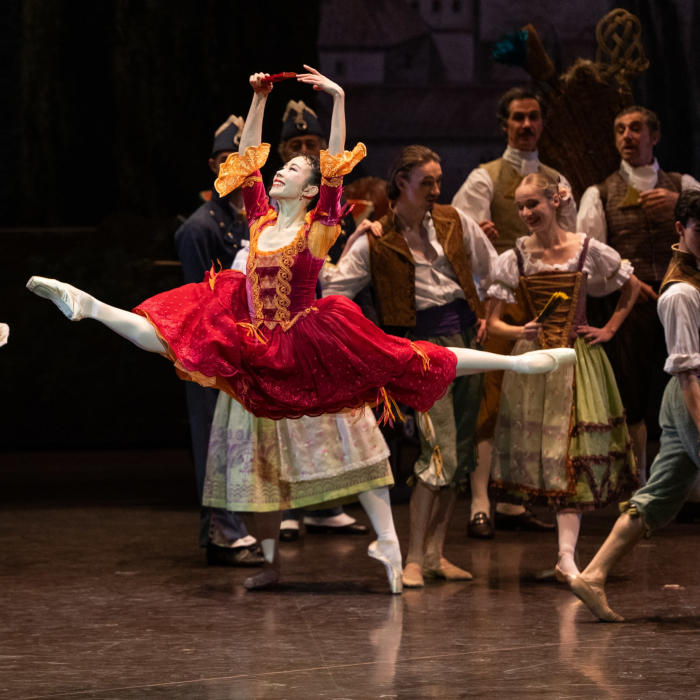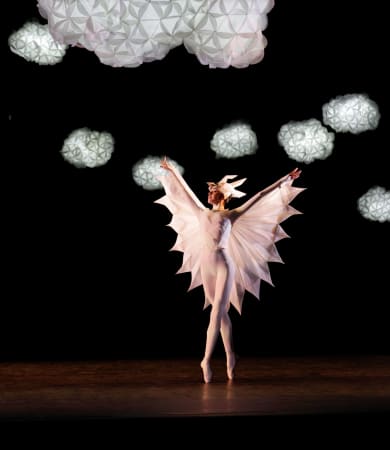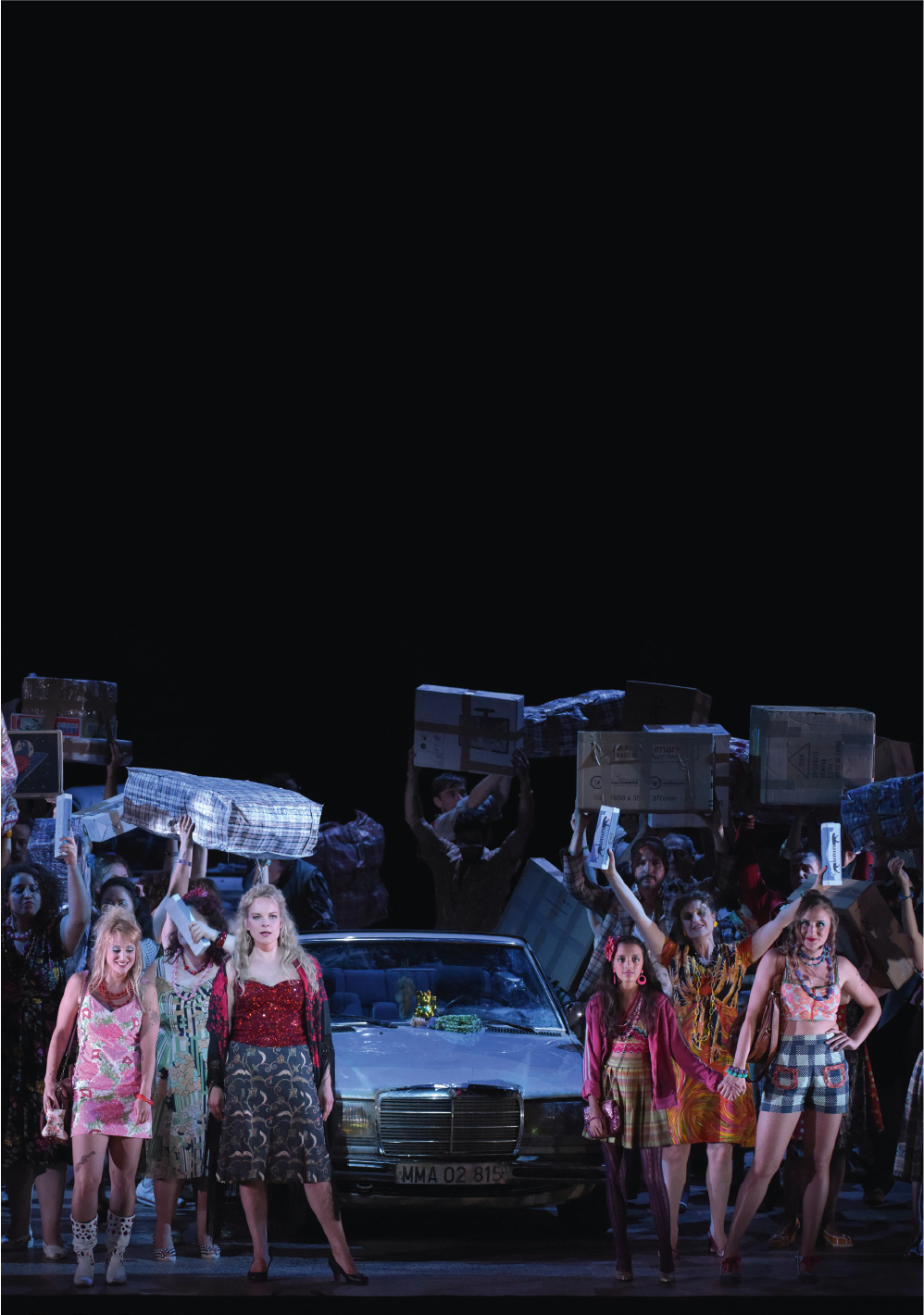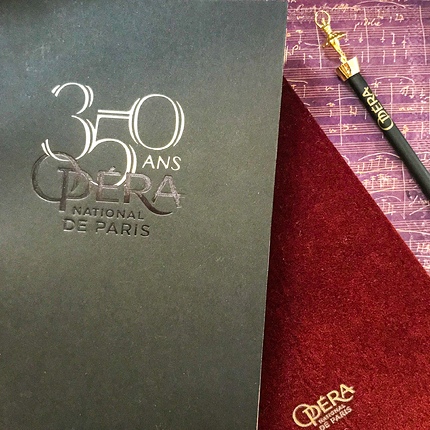The story is well-known: Giselle discovers that the man she
loves is in reality a prince betrothed to another woman. Devastated by grief,
the young peasant girl succumbs to madness and dies. She joins the Wilis, young
brides to be who have died before their nuptials and who condemn men to dance
themselves to death. If this ballet, first performed in 1841, has lost nothing
of its fascination over the centuries, it is particularly thanks to those
bewitching winged creatures, the Wilis, dressed in tulle and on points.
Anne-Marie Legrand, in charge of the Soft Dressmaking Workshop at the Palais
Garnier, confides the secrets of the making of the emblematic tutus from the
“white act” of Giselle.
The Soft Dressmaking Workshop (in French Atelier Flou, “flou” meaning blurred or indistinct) is dedicated to the conception of the female costumes, unlike the Tailoring Workshop, which makes the male costumes. Why these names? I couldn’t give you the exact reason. To my mind, when you look at a male costume made by the Tailoring Workshop, you notice that it has a more structured look, with fabric cut on a flat surface. For the female costumes, however, a large part of the work is done on the tailor's dummy because a pattern is not enough to work from. The fabrics are all-important and each one requires a particular approach. We have to be very reactive in our work, moulding and sculpting the fabric, particularly for the drapes. I think that’s where the term “flou” comes from, because we sculpt diaphanous fabric for women whose curves can be infinitely varied and subtle.
As head of the Soft
Dressmaking Workshop, I prepare the models of the costumes. The decorators
arrive at the workshops with designs that I make up in three dimensions. The
designs are more or less flexible, depending on the decorators. I have to
reconcile the vision of the artistic team with what we can do and especially
with the constraints and particularities of dance costumes, which is our
speciality. We make suggestions to the decorator and eventually the design is
finalised. Then, I create a pattern which I pass on to my two workshop assistants
who do the cutting out. Then they pass on the job to the nine dressmakers. We
also use temporary staff when the workload is really heavy. At the moment,
we’re working on a revival of the ballet Giselle
as well as on two new productions so there are twenty-seven of us in the
workshop!
The costumes for Giselle are redone regularly for several reasons. Firstly, because it’s a ballet that occupies an important place in the company’s repertoire and which is often performed, in particular on foreign tours. The costumes get a lot of wear and are stocked in containers: the dancers barely have time to take them off before they are packed away, sometimes still slightly damp. Silk yellows very quickly so we have no choice but to renew the costumes.
Once the skirts and bodices have been cut out, the dressmakers get them ready for fitting. There are always two fitting sessions. At the first, the costume is not finished. Between the first and second fitting it takes five days' work to carry out the considerable job of pleating the organdy silk used for the Wilis. After the second fitting, we make the final adjustments to the bodice before we assemble it with the skirt. It is painstaking work, all done by hand, in order to fit it perfectly to the dancer's body.
There are various sorts of skirts and tutus. The type used in Giselle is what we call a “romantic tutu”. At the end of the 18th century, with grand ballets like La Sylphide, the long skirt with several underskirts became the emblematic costume of the ballerinas. It is also known as the “Degas tutu” in reference to the painter Edgar Degas, who often took dancers as a subject for his paintings. But at the dawn of the 20th century, the tutu was shortened, became rigid and began to be worn above the hips: the pancake tutu or English tutu was now the order of the day. This is the tutu used in Swan Lake, for example, and therefore the emblematic ballerina’s costume in the collective unconscious today.
Making the bodice and the tutu requires a considerable amount of work. One single tutu in Giselle takes 23 metres of tulle, cut into seven layers placed one on top of another. We use different types of tulle with different characteristics for each layer: first comes a stiffer tulle to structure the skirt then come layers of increasingly fine, supple tulle. The layers are gathered, pinned and stitched by hand, one by one, onto a yoke. Then we do what we call “points de bagage” : large, loose stitches that keep the layers together during performance. To make a complete costume, it takes at least sixty hours.
In the second act of Giselle, the dancers all wear romantic tutus and points, which is why it is called the “white act”. It’s the most enchanting and it’s when the plot moves into the realms of the supernatural. We are in the kingdom of the Wilis, ghosts of young women who died before their weddings. I think the tutus make an essential contribution to this unearthly atmosphere. Their whiteness seems to reflect the light of the moon, - it’s extremely beautiful. And the “unreal dance” with which they ensnare men would really lose something of its hypnotic power without the effects created by the fabric. The diaphanous quality of the tutu gives the Wilis' movements an ethereal and floating quality. In spite of the twenty metres of fabric, on stage it appears infinitely light. The romantic tutu has become an integral part of the ballet Giselle.
interviewed by Milena Mc Closkey













































































